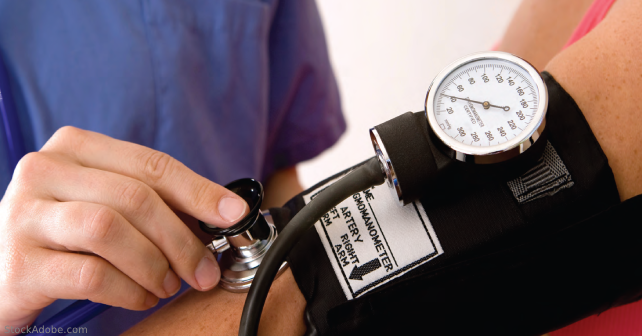
Treating elevated blood pressure (BP) in patients being discharged from the emergency department (ED) is often a challenge for emergency physicians (EPs). Often, EPs refrain from prescribing anti-hypertensive therapy on discharge due to a perception that many of these patients may not require ED care, and the likelihood of adverse outcomes, such as stroke or myocardial infarction, is minimal. Furthermore, EPs can find this patient population challenging or frustrating to manage, as they have been made anxious or concerned about an imminent stroke or myocardial infarction and frequently frightened by an outside health care worker who has little understanding of the real risk of acute, severe outcomes. Yet with nearly half of patients treated and discharged from the ED registering an elevated BP reading during their visit, hypertension is a problem that EPs cannot ignore.1
Explore This Issue
ACEP Now: Vol 43 – No 05 – May 2024Hypertension is a well-established long-term risk factor for adverse cardiovascular outcomes and premature mortality, which is why managing hypertension is routine in the primary care setting. However, the optimal outpatient management on ED discharge is unclear and varies widely among EPs, with between 6 percent and 43 percent of patients receiving a prescription on discharge.1,2,3,4 This practice variation is partly a result of a lack of evidence of benefit, as well as little concrete guidance from authoritative bodies. ACEP last updated its Clinical Policy for Managing Patients with Asymptomatic Elevated Blood Pressure in 2013, stating that “routine ED medical intervention is not required,” but that EPs may “initiate therapy for long-term control” in selected populations, such as those with poor follow-up.5 This recommendation was classified as Level C, meaning that it was based on expert consensus and had a low level of data quality. Complicating this lack of evidence and guidance on treating elevated BP, EPs may have a sense that elevated BP is a low acuity problem, best managed long-term by the primary care physician. Ultimately, EPs are often ambivalent about whether to prescribe an anti-hypertensive to the discharged hypertensive patient.
We know from the literature that prescribing antihypertensives at discharge is a safe practice, with no increased short-term risk of adverse effects.2,4 Perhaps the greatest fear of the EP, that of precipitating a stroke as a result of a rapid drop in BP after discharge, does not appear to be a risk.2 However, what remains unclear is whether there is a short-term benefit to prescribing anti-hypertensives at the time of discharge. After all, EPs typically will prescribe a week or at most a month of medication, after which hopefully the patient will follow up with their primary care physician for long-term management. If, however, a short-term benefit of treating hypertension after ED discharge could be demonstrated, then a re-evaluation of EP practice with this patient population would be worth considering.
Pages: 1 2 3 | Single Page


No Responses to “Hypertensive Patient Discharge and Management”